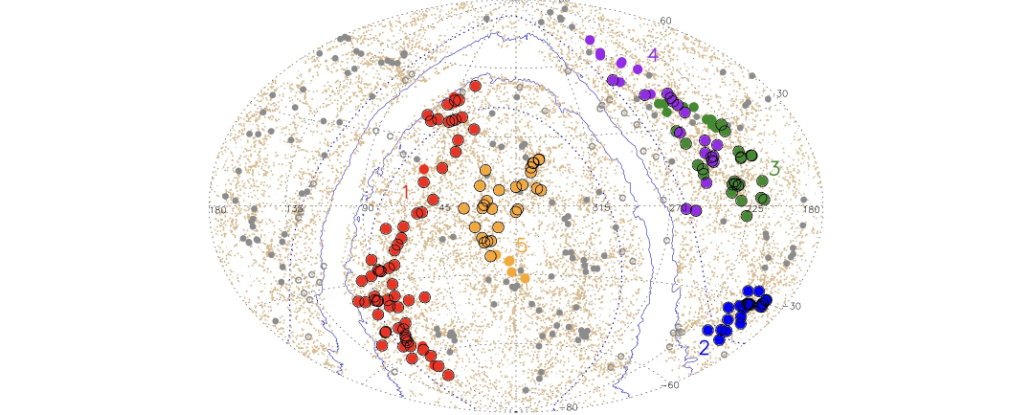ARTICLE AD
Scientists corralled the subatomic particles into a beam before accelerating them
A simulation shows tracks of particles produced in a muon collider, a proposed new type of particle smasher that scientists hope could reveal new physics secrets.</p>
" data-image-description="" data-image-meta="{"aperture":"0","credit":"","camera":"","caption":"","created_timestamp":"0","copyright":"","focal_length":"0","iso":"0","shutter_speed":"0","title":"","orientation":"0"}" data-image-title="110724_ev_muon-acceleration_feat" data-large-file="https://i0.wp.com/www.sciencenews.org/wp-content/uploads/2024/11/110724_ev_muon-acceleration_feat.jpg?fit=800%2C450&ssl=1" data-medium-file="https://i0.wp.com/www.sciencenews.org/wp-content/uploads/2024/11/110724_ev_muon-acceleration_feat.jpg?fit=680%2C383&ssl=1" data-orig-file="https://i0.wp.com/www.sciencenews.org/wp-content/uploads/2024/11/110724_ev_muon-acceleration_feat.jpg?fit=1440%2C810&ssl=1" data-orig-size="1440,810" data-permalink="https://www.sciencenews.org/110724_ev_muon-acceleration_feat" decoding="async" fetchpriority="high" height="580" role="button" sizes="(max-width: 1030px) 100vw, 1030px" src="https://i0.wp.com/www.sciencenews.org/wp-content/uploads/2024/11/110724_ev_muon-acceleration_feat.jpg?fit=1030%2C580&ssl=1" srcset="https://i0.wp.com/www.sciencenews.org/wp-content/uploads/2024/11/110724_ev_muon-acceleration_feat.jpg?w=1440&ssl=1 1440w, https://i0.wp.com/www.sciencenews.org/wp-content/uploads/2024/11/110724_ev_muon-acceleration_feat.jpg?resize=680%2C383&ssl=1 680w, https://i0.wp.com/www.sciencenews.org/wp-content/uploads/2024/11/110724_ev_muon-acceleration_feat.jpg?resize=800%2C450&ssl=1 800w, https://i0.wp.com/www.sciencenews.org/wp-content/uploads/2024/11/110724_ev_muon-acceleration_feat.jpg?resize=330%2C186&ssl=1 330w, https://i0.wp.com/www.sciencenews.org/wp-content/uploads/2024/11/110724_ev_muon-acceleration_feat.jpg?resize=768%2C432&ssl=1 768w, https://i0.wp.com/www.sciencenews.org/wp-content/uploads/2024/11/110724_ev_muon-acceleration_feat.jpg?resize=1030%2C580&ssl=1 1030w, https://i0.wp.com/www.sciencenews.org/wp-content/uploads/2024/11/110724_ev_muon-acceleration_feat.jpg?resize=1380%2C776&ssl=1 1380w" tabindex="0" width="1030">
A simulation shows tracks of particles produced in a muon collider, a proposed new type of particle smasher that scientists hope could reveal new physics secrets.
D. Lucchesi et al, CERN
Muons are getting a move on.
In a step toward new types of particle physics experiments, scientists cooled and then accelerated a beam of muons. The subatomic particles, heavy cousins of electrons, could be accelerated and slammed together at future particle colliders in hopes of unlocking physics secrets. But first, scientists have to figure out how to give muons a speed boost.
Counterintuitively, that means first slowing muons down. Muons in particle beams initially go every which way. To make a beam suitable for experiments, the particles need to be first slowed and then reaccelerated, all in the same direction. This slowing, or cooling, was first demonstrated in 2020 (SN: 2/5/20).
Now, scientists have not only cooled muons but also accelerated them in an experiment at the Japan Proton Accelerator Research Complex, or J-PARC, in Tokai. The muons reached a speed of about 4 percent the speed of light, or roughly 12,000 kilometers per second, researchers report October 15 at arXiv.org.
The scientists first sent the muons into an aerogel, a lightweight material that slowed the muons and created muonium, an atomlike combination of a positively charged muon and a negatively charged electron. Next, a laser stripped away the electrons, leaving behind cooled muons that electromagnetic fields then accelerated.
Muon colliders could generate higher energy collisions than machines that smash protons, which are themselves made up of smaller particles called quarks. Each proton’s energy is divvied up among its quarks, meaning only part of the energy goes into the collision. Muons have no smaller bits inside. And they’re preferable to electrons, which lose energy as they circle an accelerator. Muons aren’t as affected by that issue thanks to their larger mass.
In addition to colliders, muon beams are useful for experiments such as measuring the particles’ magnetic properties, a subject that has confounded physicists (SN: 8/10/23).

 2 months ago
25
2 months ago
25 

